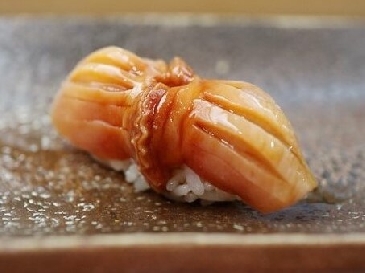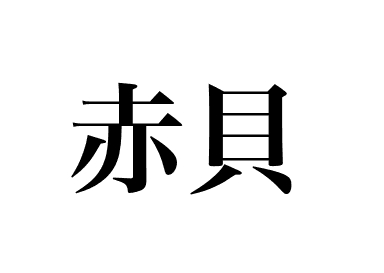Shellfish


Ark shell (Akagai)
【Nigiri sushi: Kai】
What is Akagai?
As the name suggests, Akagai has a bright, reddish-orange body and mantle inside the shell (‘aka’ means red in Japanese). This is rare in marine products and it occurs because there is blood that contains hemoglobin in the body. Akagai lives buried in the shallow muddy floors of inner bays from Hokkaido to Kyushu, in waters about 10 meters deep.
What does Akagai (Ark shell) nigiri sushi taste like?
Larger-than-normal sizes with thick meat are of higher quality. It is important to keep alive without removing from the shell until just before preparing. Striking the meat on a cutting board right before making the sushi, gives the soft, still living meat a bit of a firmer texture. Inserting the Kazari boucho, to make the meat look like a butterfly, is not only for aesthetic appeal, it also makes the topping easier to eat. Also, when the Kazari boucho slits rise, it is proof that the piece is fresh. The mantle attached to the adductor muscle is also has a pleasant flavor and firm texture and many people like it even more than the meat. For both of these, dipping in vinegar directly before preparation prevents the odor that would otherwise be generated after preparation. On the other hand, at Sukiyabashi Jiro and Sushi Watanabe, the ark shell is served raw (without dipping in vinegar) in order to maintain the original flavor.
Many ark shells used to be caught at Edomae, the bay of Tokyo before; the one from Kemigawa Chiba prefecture was highly valued. The sleek and vivid color of shell meat shows its freshness. Enjoy the rich flavor of the ocean and firm texture.
Also called Bloody clam or red clam. (Revision date: October 29, 2022)
【Substitute fish】
Half-crenated ark: Anadara kagoshimensis (Tokunaga, 1906)
Bloody clam: Anadara satowi (Dunker, 1882)
Atlantic bay scallop: Argopecten irradians irradians (Lamarck, 1819)
【Related contents】
What is Ishigakigai sushi?
What is Himokyu-maki?
List of Shellfish (Kai)
Main production area
Miyagi Aichi Seto Inland Sea
Famous production area
Yuriage Mikawa Bay Kanonji Ube Nakatsu
Season
Late autumn-Winter

